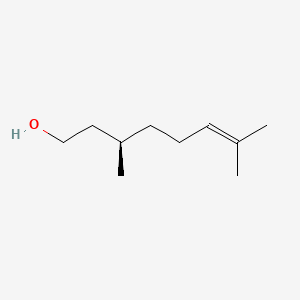| Authors | Title | Published | Journal | PubMed Link |
|---|---|---|---|---|
| Batubara I et al. | Effects of inhaled citronella oil and related compounds on rat body weight and brown adipose tissue sympathetic nerve. | 2015 | Nutrients | pmid:25774603 |
| Scheman A et al. | European Directive fragrances in natural products. | 2014 Mar-Apr | Dermatitis | pmid:24603515 |
| Kubo K et al. | Synthesis and properties of cholesteryl 4-(Alkanoylamino)benzoates: liquid crystals and organogelators. | 2014 | J Oleo Sci | pmid:24599108 |
| Ramos Alvarenga RF et al. | Airborne antituberculosis activity of Eucalyptus citriodora essential oil. | 2014 | J. Nat. Prod. | pmid:24641242 |
| Ribeiro JC et al. | Efficacy of free and nanoencapsulated Eucalyptus citriodora essential oils on sheep gastrointestinal nematodes and toxicity for mice. | 2014 | Vet. Parasitol. | pmid:24929446 |
| Takayama F et al. | Possible involvement of aiPLA2 in the phosphatidylserine-containing liposomes induced production of PGE2 and PGD2 in microglia. | 2013 | J. Neuroimmunol. | pmid:23850486 |
| Su LD et al. | Retrograde cPLA2α/arachidonic acid/2-AG signaling is essential for cerebellar depolarization-induced suppression of excitation and long-term potentiation. | 2013 | Cerebellum | pmid:23307660 |
| Pellati F et al. | Gas chromatography combined with mass spectrometry, flame ionization detection and elemental analyzer/isotope ratio mass spectrometry for characterizing and detecting the authenticity of commercial essential oils of Rosa damascena Mill. | 2013 | Rapid Commun. Mass Spectrom. | pmid:23413218 |
| Barbera D et al. | Determination of terpene alcohols in Sicilian Muscat wines by HS-SPME-GC-MS. | 2013 | Nat. Prod. Res. | pmid:22502739 |
| Tripathi T et al. | Role of phospholipase Aâ‚‚ (PLAâ‚‚) inhibitors in attenuating apoptosis of the corneal epithelial cells and mitigation of Acanthamoeba keratitis. | 2013 | Exp. Eye Res. | pmid:23792108 |
beta-Citronellol
Beta-citronellol is a lipid of Prenol Lipids (PR) class. The involved functions are known as Glycolysis.
Cross Reference
Introduction
To understand associated biological information of beta-Citronellol, we collected biological information of abnormalities, associated pathways, cellular/molecular locations, biological functions, related genes/proteins, lipids and common seen animal/experimental models with organized paragraphs from literatures.
What diseases are associated with beta-Citronellol?
There are no associated biomedical information in the current reference collection.
No disease MeSH terms mapped to the current reference collection.
PubChem Associated disorders and diseases
What pathways are associated with beta-Citronellol
There are no associated biomedical information in the current reference collection.
PubChem Biomolecular Interactions and Pathways
Link to PubChem Biomolecular Interactions and PathwaysWhat cellular locations are associated with beta-Citronellol?
There are no associated biomedical information in the current reference collection.
What functions are associated with beta-Citronellol?
Related references are published most in these journals:
| Function | Cross reference | Weighted score | Related literatures |
|---|
What lipids are associated with beta-Citronellol?
There are no associated biomedical information in the current reference collection.
What genes are associated with beta-Citronellol?
There are no associated biomedical information in the current reference collection.
What common seen animal models are associated with beta-Citronellol?
There are no associated biomedical information in the current reference collection.
